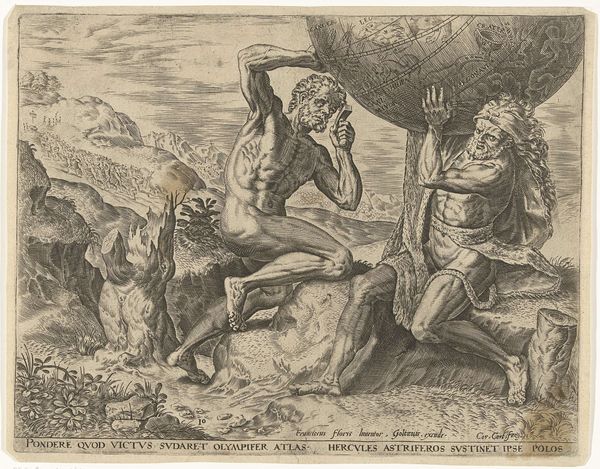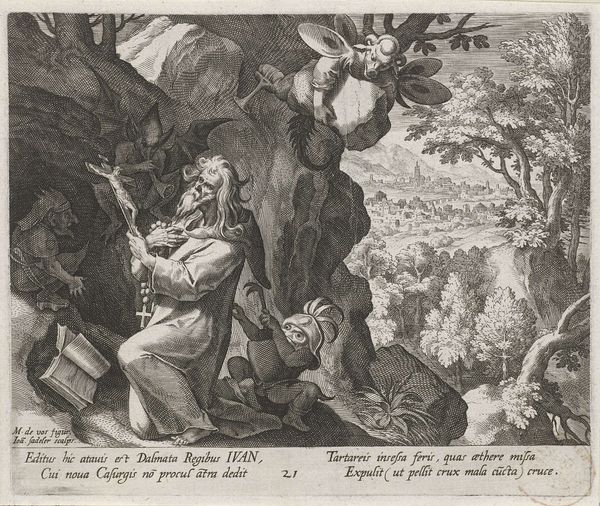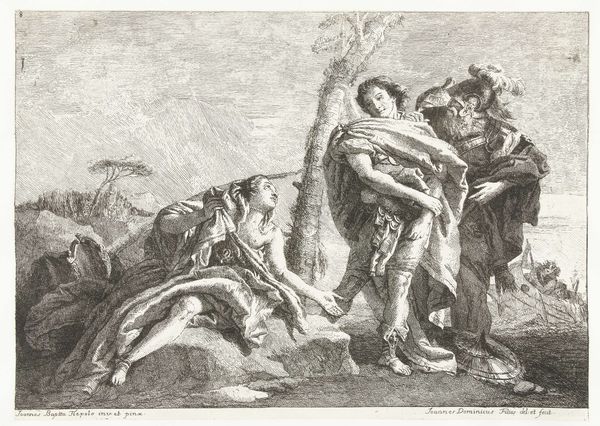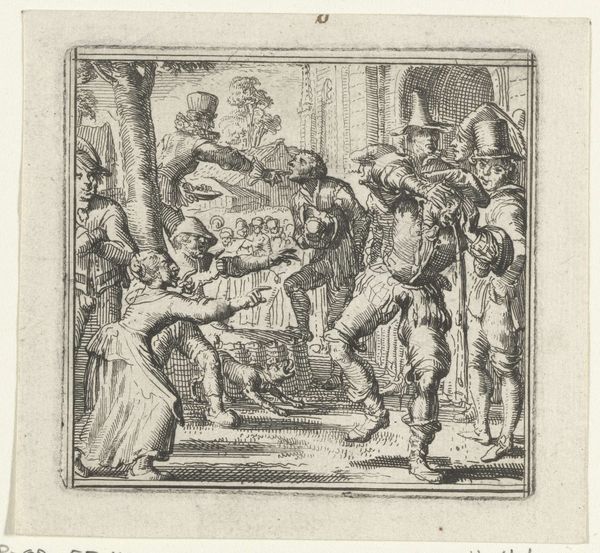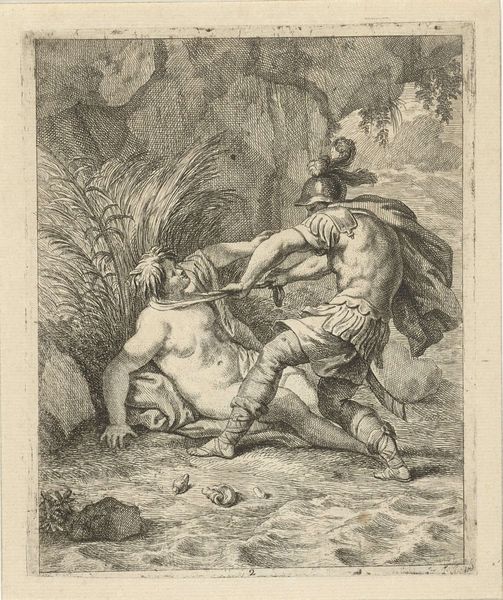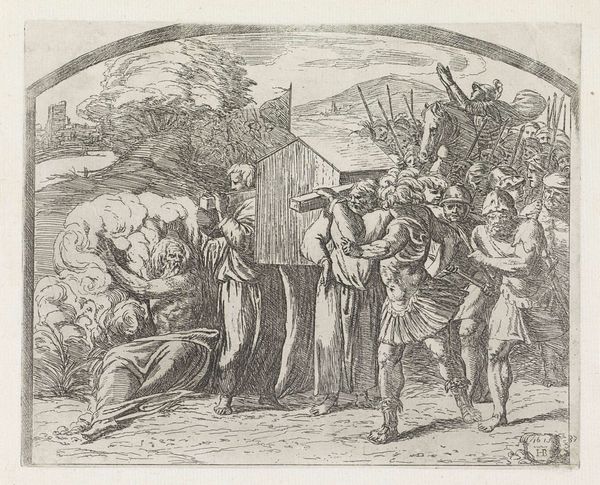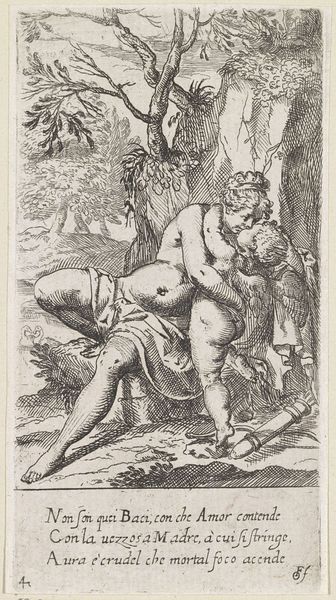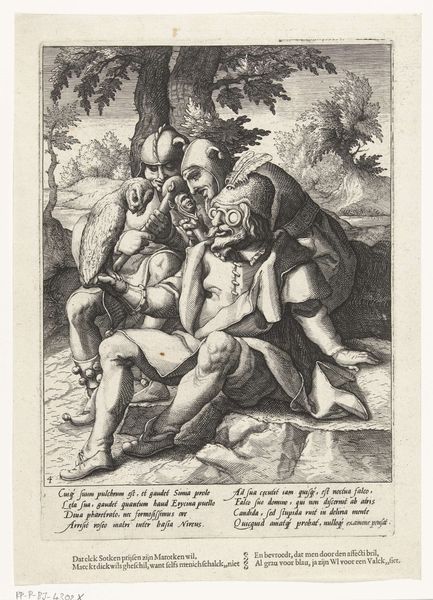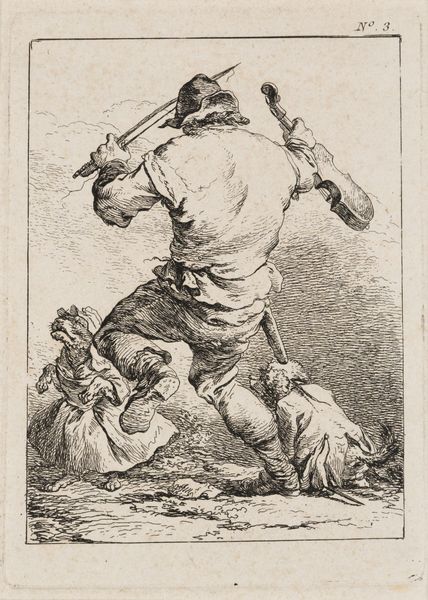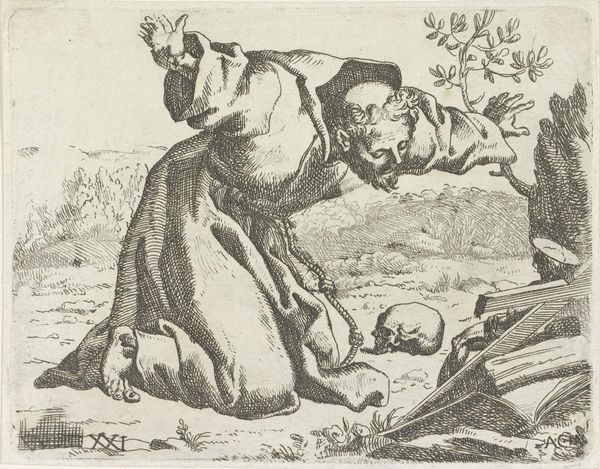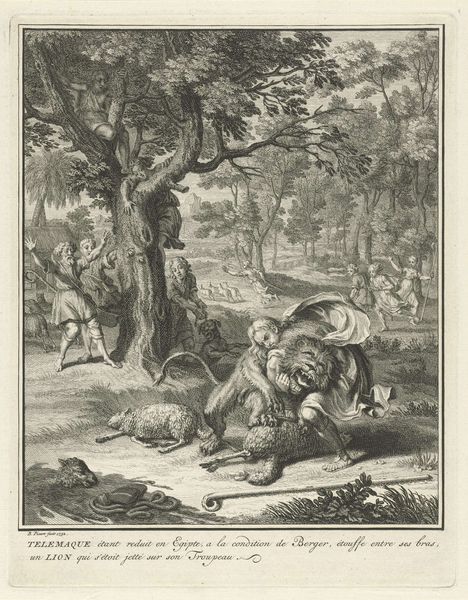
print, etching
#
allegory
#
baroque
# print
#
etching
#
genre-painting
Dimensions: height 204 mm, width 268 mm
Copyright: Rijks Museum: Open Domain
Curator: Well, this is quite a scene! The Rijksmuseum holds this etching by Jan Lievens, titled "Twistende kaartspelers en de Dood," created in 1638. What’s your initial take? Editor: Darkly humorous, I’d say. Look at the frantic energy etched into those lines. It's as though the artist caught a fleeting moment of reckless abandon right before… well, death crashes the party. And speaking of etching, how did Lievens approach the printmaking? Curator: A great question. Lievens was deeply invested in the materiality of etching. Here, he utilizes a fairly dry needle, leaving burrs of copper clinging to the plate. This gives those characteristic fuzzy lines that evoke the atmosphere in a quite powerful manner. Editor: Fascinating! Seeing Death looming over these gamblers reminds us of similar themes across European art during this period. Was Lievens intentionally referencing social attitudes towards morality and death that museums were propagating? Curator: Absolutely. The Dance of Death was a popular motif, reflecting the pervasive anxieties linked to mortality, especially during times of plague and war. Museums, even in their earliest forms, were becoming repositories of such visual warnings, shaping a specific moral narrative for the public. These artworks were meant as didactic tools. Editor: It’s compelling how Lievens situates the allegorical within a scene of everyday life. Are the gamblers stock characters for, perhaps, representing social commentary regarding economic anxieties? What would people make of the game and tools used? Curator: The details of their clothing, the cut of the cards and the overall impression gives a vivid portrayal of ordinary lives touched by extraordinary events, as ordinary folks used them and handled them on a regular basis. Perhaps this print makes viewers re-evaluate everyday tools in their daily life. The artist emphasizes the universal appeal of morality through easily comprehensible elements, and perhaps reminds the affluent members in the viewership about where such resources came from. Editor: So it bridges high allegory and tangible life! Jan Lievens uses readily-available materials to discuss and connect to important socio-political concerns within society, with a dash of the dark humour. The scale of this piece invites prolonged, close engagement, a testament to the value of physical interactions. Curator: Indeed. A final reminder that, even in fleeting pleasures, we’re shadowed by impermanence, and how Lievens and the medium play their roles within museums' moral messages!
Comments
No comments
Be the first to comment and join the conversation on the ultimate creative platform.
